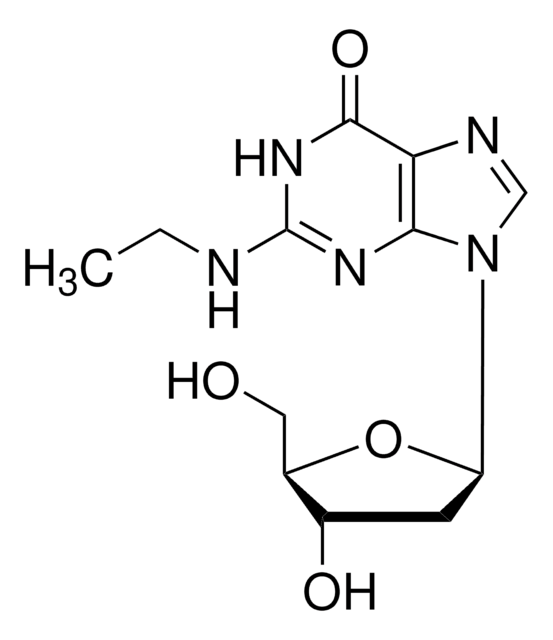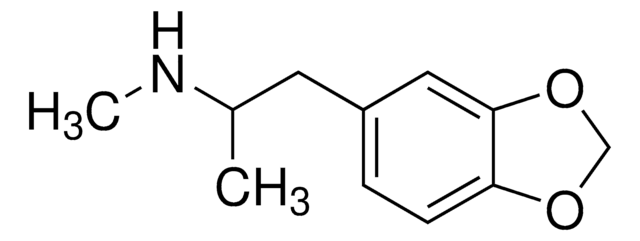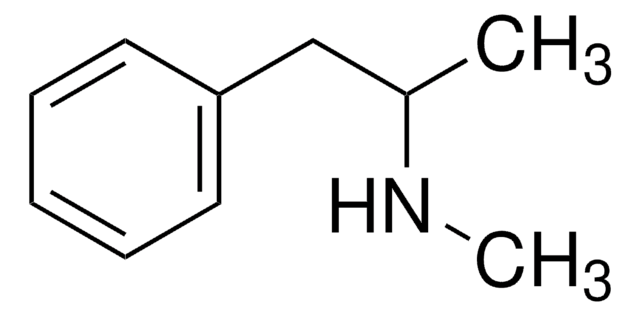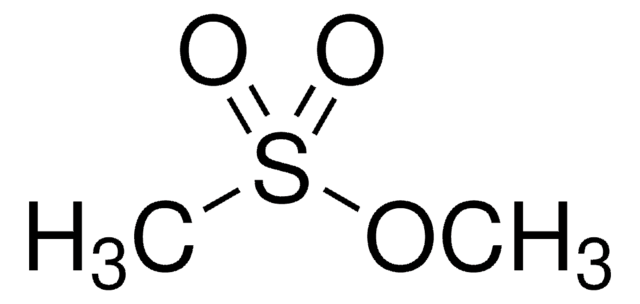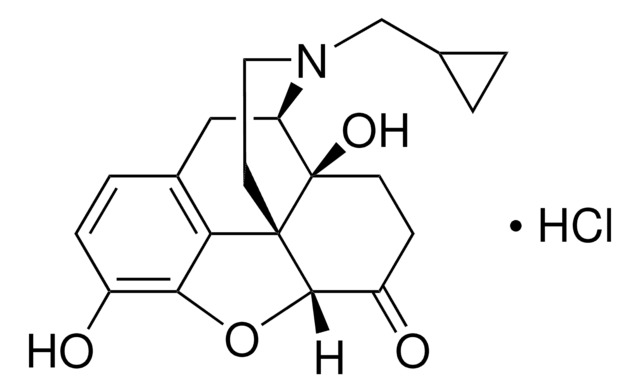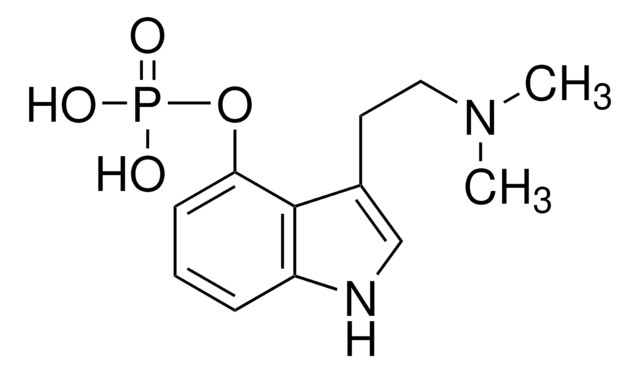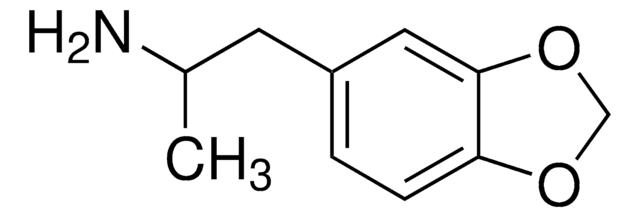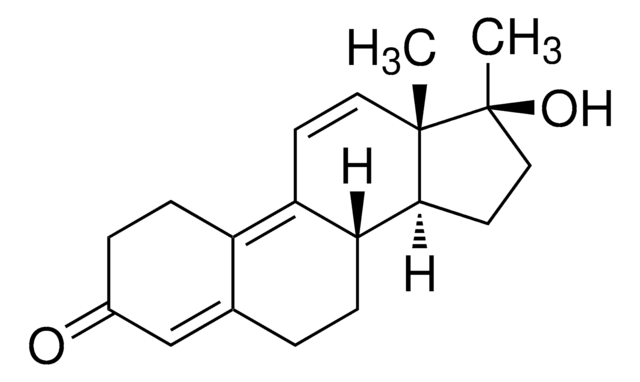Wichtige Dokumente
M1796
(±)-3,4-Methylenedioxy-N-ethylamphetamine hydrochloride
≥98% (TLC)
Synonym(e):
MDEA -hydrochlorid
About This Item
Empfohlene Produkte
Qualitätsniveau
Assay
≥98% (TLC)
Arzneimittelkontrolle
USDEA Schedule I; Home Office Schedule 1; stupéfiant (France); kontrollierte Droge in Deutschland; regulated under CDSA - not available from Sigma-Aldrich Canada; psicótropo (Spain); Decreto Lei 15/93: Tabela IA (Portugal)
SMILES String
Cl[H].NCCc1ccc2OCOc2c1
InChI
1S/C12H17NO2.ClH/c1-3-13-9(2)6-10-4-5-11-12(7-10)15-8-14-11;/h4-5,7,9,13H,3,6,8H2,1-2H3;1H
InChIKey
IBDIPBWIXJRJQM-UHFFFAOYSA-N
Biochem./physiol. Wirkung
Sonstige Hinweise
Signalwort
Danger
H-Sätze
Gefahreneinstufungen
Acute Tox. 3 Oral - STOT SE 3
Zielorgane
Respiratory system
Lagerklassenschlüssel
6.1C - Combustible acute toxic Cat.3 / toxic compounds or compounds which causing chronic effects
WGK
WGK 2
Flammpunkt (°F)
Not applicable
Flammpunkt (°C)
Not applicable
Persönliche Schutzausrüstung
Eyeshields, Faceshields, Gloves, type P3 (EN 143) respirator cartridges
Hier finden Sie alle aktuellen Versionen:
Besitzen Sie dieses Produkt bereits?
In der Dokumentenbibliothek finden Sie die Dokumentation zu den Produkten, die Sie kürzlich erworben haben.
Unser Team von Wissenschaftlern verfügt über Erfahrung in allen Forschungsbereichen einschließlich Life Science, Materialwissenschaften, chemischer Synthese, Chromatographie, Analytik und vielen mehr..
Setzen Sie sich mit dem technischen Dienst in Verbindung.